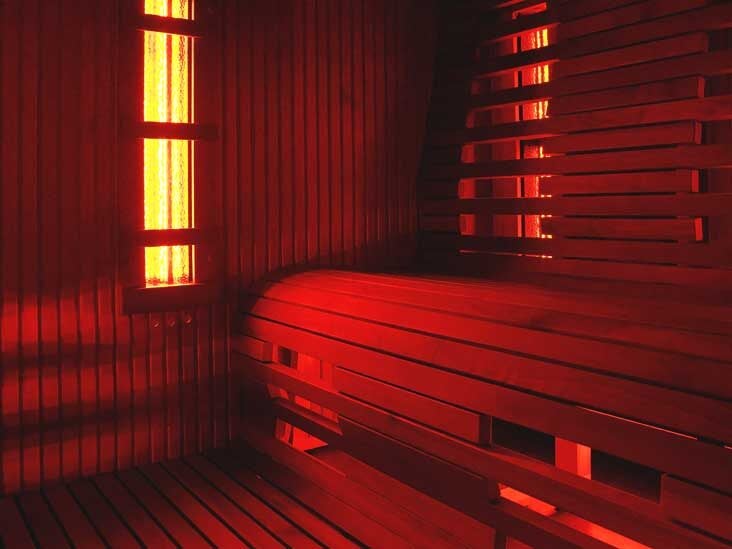Struggling to find a stress reliever? Why not try a dry sauna?
This unique and powerful tool offers myriad benefits, from improved circulation to detoxification. You’ll find out everything you need to know about a dry sauna in this comprehensive guide!
Dry saunas offer an effective way to reduce stress and improve the condition of your skin. It is a natural experience that can be used to relax and create a sense of wellbeing. By understanding the dynamics of a dry sauna, you can make an informed decision as to whether it is right for you. This guide will provide an overview on dry saunas, including how they work, their potential health benefits, and which type is best for your lifestyle.
Dry saunas come in two varieties — electric-powered and wood-fired models. Each has its own unique character and offers different benefits. Electric-powered models require less work upfront and are typically more affordable than wood-fired models, but produce lower heat levels that may not be as effective for certain health issues. On the other hand, wood-fired models provide a more authentic experience—heating up quickly with intense heat levels—but require more care in regards to maintenance and upkeep due to emissions from the burning wood logs.
Explanation of dry saunas
Dry saunas use dry air to create a relaxing, health-restoring experience. This type of sauna is often the traditional option in Europe, especially Finland, and is now gaining wider acceptance throughout the world. Dry saunas can be used indoors or outdoors and may be fueled by electricity, wood or gas. The main characteristic of dry saunas is that they use extremely hot temperatures with little or no humidity to create an intense sweating experience.
The temperature inside a dry sauna will range from 80°C (176°F) to 100°C (212°F). The higher the temperature, the more intense the experience will be. During a typical session, you may spend 10-20 minutes in the sauna with brief breaks if needed. These breaks are necessary as you could become light-headed and dehydrated otherwise due to the heat and sweating that occurs during this process.
Sweating during a dry sauna has several benefits for your health including improved circulation, calming of your muscles and relaxation of your mind. Furthermore, it also helps you detoxify because it helps your body eliminate toxins through sweat which can improve your overall wellbeing. To ensure maximum comfort while using a dry sauna it’s important to provide sufficient hydration prior to entering and while using the sauna itself by drinking plenty of water or isotonic beverages such as coconut water or a sports drink before each session.

Brief history of dry saunas
The practice of using a sauna is one that has been in existence for centuries and varies depending on the region. For instance, the Finnish sauna tradition dates back to at least the 12th century, whereas Russian bathhouses have been used since ancient times. The Finnish variant of saunas is known as a dry sauna, or suivu in Finland.
This traditional version of saunas uses dry heat to induce sweating and relax the body and mind. Dry heat comes from heated rocks placed within a wood-paneled room and is typically between 160°F and 190°F, with some resort-style versions reaching up to 215°F, although temperatures can be regulated more precisely these days. The intense heat serves to open up pores in the skin, eliminate toxins from the body, reduce stress levels in an incredibly efficient manner, and relieve muscle pain through increased circulation. Furthermore, since it is done traditionally in a completely dark space made from wood (which some say contributes to additional relaxation), visitors often found that it becomes an immersive experience that far exceeds what other forms of relaxation can offer.
What are dry saunas?
Dry saunas are the oldest form of sauna and are very popular in Scandinavia and Russia. Instead of using steam or water to create humidity, they use heated air to produce dry temperatures as high as 75-100°C (167-212°F). This dry heat can feel more intense than humid sauna sessions, since it forces your body to sweat faster, rather than relying on steam to help evenly distribute the heat. During a dry sauna session, it is important to be mindful of your body’s natural limits, watch out for symptoms like heat exhaustion or dizziness, and remember to always hydrate before and after.
Dry saunas have several unique benefits compared with traditional wet or steam-based saunas. They often require less energy and have an overall lower operational cost due to their relatively low temperature. In addition, some people prefer the sensation of increased comfort from the humid air created in a wet/steam session over a completely dry environment found in many traditional dry saunas. However, even if you don’t necessarily prefer one type of sauna over another, there are various scientific studies that show that both forms offer different advantages for certain health conditions so trial sessions with both types may help determine what works best for you personally.
Definition
A dry sauna is an environment where heated air is circulated throughout the interior of a specialty-built room. This air, usually heated up to well over 100°F, aids in sweat production and helps the body relax.
Dry saunas typically have one or more benches for sitting on and even a raised platform for bathers to lie down on so that maximum relaxation can be enjoyed. Infrared saunas are another type of dry sauna, utilizing infrared light in order to create a deep-tissue warm sensation.
How dry saunas work
Dry saunas are similar to traditional steam saunas, but the heating elements are at a much higher temperature and there is very little humidity in the air. But the air inside a dry sauna is even hotter than in a wet one, making a dry sauna more intense. Generally, temperatures range from 150°F to 200°F (65°C to 93°C). Dry saunas also use an infrared heating element that penetrates deeper into the body….Unlike wet saunas, which heat the air around you, infrared heaters produce light waves that transfer direct heat energy to your body without heating the surrounding air. This means that you may be able to handle dry sauna temperatures that are much hotter than those of a wet sauna.
In addition to using heat, dry saunas use other methods to increase perspiration. Stones or rocks placed within an enclosed area provide additional radiant heat. The stones generate their own considerable heat and absorb some of your sweat and oils so you can enjoy deep tissue action for a truly vigorous massage experience. A tightly sealed door keeps the temperature inside higher than outside temperatures allow, leading water molecules within your skin’s upper layer transpire faster for warmth instead of stimulating sweat production like in wet environments.
Differences between dry saunas and steam rooms
When considering whether a dry sauna or a steam room fits your preferences, it is important to understand the differences between the two.
A dry sauna works by heating the air well above body temperature, which then causes you to sweat profusely and leaves your skin feeling very refreshed. As the air is heated, the humidity in the sauna goes down and can range from 10-30%. In a steam room, however, instead of heating up the air, steam is produced from a generator using natural or artificial scents or essential oils. The humidity of this environment is around 100% and it helps to open up pores and deepen breathing.
Furthermore, traditional dry saunas commonly use hot stones for further heat production and many also feature infrared lamps for additional warmth. Infrared radiation is even beneficial for health since specific wavelengths are known to improve circulation, amongst other benefits. While most steam rooms opt to use plenty of water rather than hot stones; some may have hot rocks that create an environment similar to that of a traditional dry sauna.
To conclude, while both types provide significant health benefits they differ in their process: Steam rooms produce 100% humidity through filling their rooms with steam generated by hot rocks while dry saunas use heated air at low humidity levels due to absence of extra moisture in form of steam or water vapor. Therefore depending on your personal preference you could decide which setup works best for you!

III. Benefits of dry saunas
Dry saunas offer various benefits which are thought to improve physical and mental wellness. For physical health, it is believed that a sauna session can help reduce muscle tension, increases metabolism, boosts blood circulation, and helps with overall healing, as well as providing pain relief from arthritis and fibromyalgia.
Dry saunas are also said to increase blood pressure, activate immune cells to help fight against infection, and improve respiratory health by promoting the expulsion of phlegm. Moreover, regular use of dry saunas can bring about healthier skin by helping remove toxins from the body through sweating.
On the mental health side of things, the soothing heat provided by dry saunas can be extremely relaxing; many individuals have reported feeling more energized after they leave their session than they did before they entered. Regular sauna use is believed to reduce stress levels; some even report feelings of euphoria during their session! Furthermore, the calm atmosphere provided by a traditional dry sauna (e.g., dim light, a relaxed environment) promotes an excellent mental state for meditation or just to relax and renew one’s mind.
Physical benefits
With dry saunas, the air is significantly drier and hotter than regular saunas. The average temperature in a dry sauna is usually around 122-212°F (50-100°C). This creates a much more intense environment and a more intense, yet pleasant sweat.
Because of the extreme heat, there are various physical benefits to using dry saunas. These benefits include increased metabolism, improved circulation, deep relaxation of muscles, better breathing and an improvement to overall skin health. Additionally, it can help to promote healthy weight loss by way of improved metabolism as well as reduce stress, anxiety and fatigue levels. It can also help alleviate many respiratory difficulties by breaking up chest congestion and helping to prevent throat and lung infections.
Detoxification
Dry saunas offer a number of health and wellness benefits, including detoxification. In a dry sauna, far-infrared heat permeates the body at the cellular level, gently raising the core body temperature.
This process helps to flush out toxins from your organs and tissues such as heavy metals, chemicals, and other toxic substances that can build up in our bodies over time. As you sweat during your dry sauna session, these toxins are removed from your body through your sweat – similar to a fever response.
By elevating your core body temperature and reducing stress hormones, dry saunas can help to support overall health by improving immune function.
Mental benefits
Using a dry sauna can provide a number of important mental health benefits that range from calming the mind and reducing stress to improving overall cognitive function. Research suggests that exposure to infrared saunas can help improve mood by releasing endorphins, which are “feel-good” hormones. Additionally, the heat of the dry sauna can induce a relaxing, meditative state that may be beneficial in managing symptoms of depression and anxiety.
The use of dry saunas has also been linked to improved mental clarity and focus as well as better sleep. Some studies have even suggested that regular sessions in a dry sauna may help improve memory and concentration as well as reduce symptoms of Alzheimer’s disease. Furthermore, increased exposure to infrared heat during a sauna session can increase circulation, which will then increase oxygen levels throughout the body. This boost in oxygen helps fuel your brain and allows it to work more efficiently overall.
Stress relief
Dry saunas are like traditional steam saunas in that they use heat to relax both body and mind. However, unlike steam saunas, dry saunas don’t use any moisture. Instead, they rely on dry heat to create a more intense and therapeutic sweat. In fact, dry sauna temperatures can reach up to 160-200 °F (71-93 °C), far higher than a typical steam sauna.
The benefits of using a dry sauna are numerous; stress relief being first and foremost. When you lie down in the heated environment of a dry sauna, your muscles naturally relax by increasing their temperature and improving blood circulation. Your heart also beats faster, causing your body to release endorphins that make you feel relaxed and energized at the same time!
Moreover, the hot air adds moisture to your skin for extra comfort as it simultaneously promotes overall wellbeing by reducing toxins from the body. Additionally, because there is no need for water in a dry sauna, the air is much cleaner than with steam technology so you have less irritation from dirt or bacteria being dispersed into the air while enjoying your sweat session. This makes it great for those who suffer from respiratory ailments such as asthma or allergies.

Conclusion
This guide has provided a comprehensive overview of the dry sauna and why it should be tried. Dry saunas are a great way to relax, reduce stress and soothe the body after physical activity or long hours at work. Additionally, they can help to improve circulation and may provide relief for common ailments such as muscle stiffness and joint pain.
Overall, incorporating dry saunas into your wellness routine can provide many mental and physical benefits. For those looking for relief from common aches and pains or simply want to relax after a long day, implementing dry saunas into your lifestyle could be well worth it.
FAQ’s
What is the dry sauna good for?
Dry sauna can provide numerous health benefits such as improved cardiovascular function, relaxation, stress relief, pain relief, and improved skin health.
What type of dry sauna is best?
The best type of dry sauna depends on personal preferences and needs. Traditional Finnish saunas, infrared saunas, and electric saunas are some popular types of dry saunas.
What’s a dry sauna?
A dry sauna is a heated room or enclosure designed to promote sweating and relaxation by raising the body temperature. It typically uses dry heat produced by rocks or electric heaters.
What is different about a dry sauna?
A dry sauna uses dry heat to raise the body temperature, whereas a steam sauna uses moist heat. Dry saunas also typically have lower humidity levels than steam saunas.
Is it OK to dry sauna everyday?
Sauna use frequency depends on individual health and tolerance. It is generally safe for healthy adults to use a dry sauna every day, but it is best to consult with a healthcare professional before starting a daily sauna routine.
Does dry sauna burn fat?
Dry sauna can help with weight loss by increasing metabolism and promoting sweating. However, it does not directly burn fat and should be used in conjunction with a healthy diet and exercise.
Who should not use dry sauna?
Individuals with certain health conditions, such as heart disease, low blood pressure, and pregnancy, should not use a dry sauna without consulting a healthcare professional first.
Do you wear clothes in a dry sauna?
Typically, people do not wear clothes in a dry sauna to allow the skin to breathe and to promote sweating. However, it is acceptable to wear a towel or swimsuit if preferred.
What age is dry sauna for?
Dry sauna is generally safe for healthy adults, but children under the age of 12 should not use a dry sauna without consulting a healthcare professional first.
Can I drink water in a dry sauna?
Yes, it is important to stay hydrated while using a dry sauna, and drinking water is recommended. However, it is important to take caution to avoid spills or burns.
See Also :
- Best sauna suits 2023
- Best sauna suits for weight loss 2023
- Best sauna suit for men 2023
- Best sauna heaters 2023
- Best sauna for home 2023


